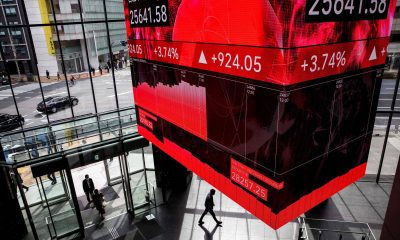Commodities
US bans new oil and gas leasing around New Mexico cultural site

The Biden administration said on Friday it would stop issuing new oil and gas drilling leases within 10 miles of the Chaco Culture National Historical Park, a region central to Pueblo ancestral heritage in northwest New Mexico.
Tribes, conservationists and state officials have long called on the federal government to ban drilling in the area. Structures in the area date back thousands of years, and the park is listed as a World Heritage Site by UNESCO, the United Nations’ cultural agency.
President Joe Biden first proposed protecting the area in November of 2021. It is aligned with his goal to conserve at least 30% of federal lands and waters by 2030.
But, the Interior Department ban on new leasing on federal lands around Chaco will last for just 20 years and does not extend to private, state or tribal lands.
“Today marks an important step in fulfilling President Biden’s commitments to Indian Country, by protecting Chaco Canyon, a sacred place that holds deep meaning for the Indigenous peoples whose ancestors have called this place home since time immemorial,” Interior Department Secretary Deb Haaland said in a statement.
Haaland, a New Mexican who is the nation’s first Native American cabinet secretary, is a member of the Pueblo of Laguna tribe. New Mexico’s Congressional delegation introduced a bill this year that would go a step further than the Interior order by permanently protecting the region.
Oil and gas industry groups have opposed withdrawing the lands around Chaco for leasing.
In addition, the Navajo Nation withdrew its support for the plan last month, saying its members could lose potential income tied to those resources.
The U.S. Bureau of Land Management last year estimated that protecting the lands would result in the long-term loss to the federal government of $4.8 million a year in royalties. It also said about 49 jobs would not be created.
Commodities
Oil prices rise; U.S. crude inventories plunge, Russia-Ukraine truce eyed
Commodities
India’s Reliance to stop buying Venezuelan oil over US tariffs, sources say
Commodities
Oil prices climb on Venezuela supply worries

 Forex3 years ago
Forex3 years agoForex Today: the dollar is gaining strength amid gloomy sentiment at the start of the Fed’s week

 Forex3 years ago
Forex3 years agoUnbiased review of Pocket Option broker

 Forex3 years ago
Forex3 years agoDollar to pound sterling exchange rate today: Pound plummeted to its lowest since 1985

 Forex3 years ago
Forex3 years agoHow is the Australian dollar doing today?

 Cryptocurrency3 years ago
Cryptocurrency3 years agoWhat happened in the crypto market – current events today

 World3 years ago
World3 years agoWhy are modern video games an art form?

 Commodities3 years ago
Commodities3 years agoCopper continues to fall in price on expectations of lower demand in China

 Economy3 years ago
Economy3 years agoCrude oil tankers double in price due to EU anti-Russian sanctions



































